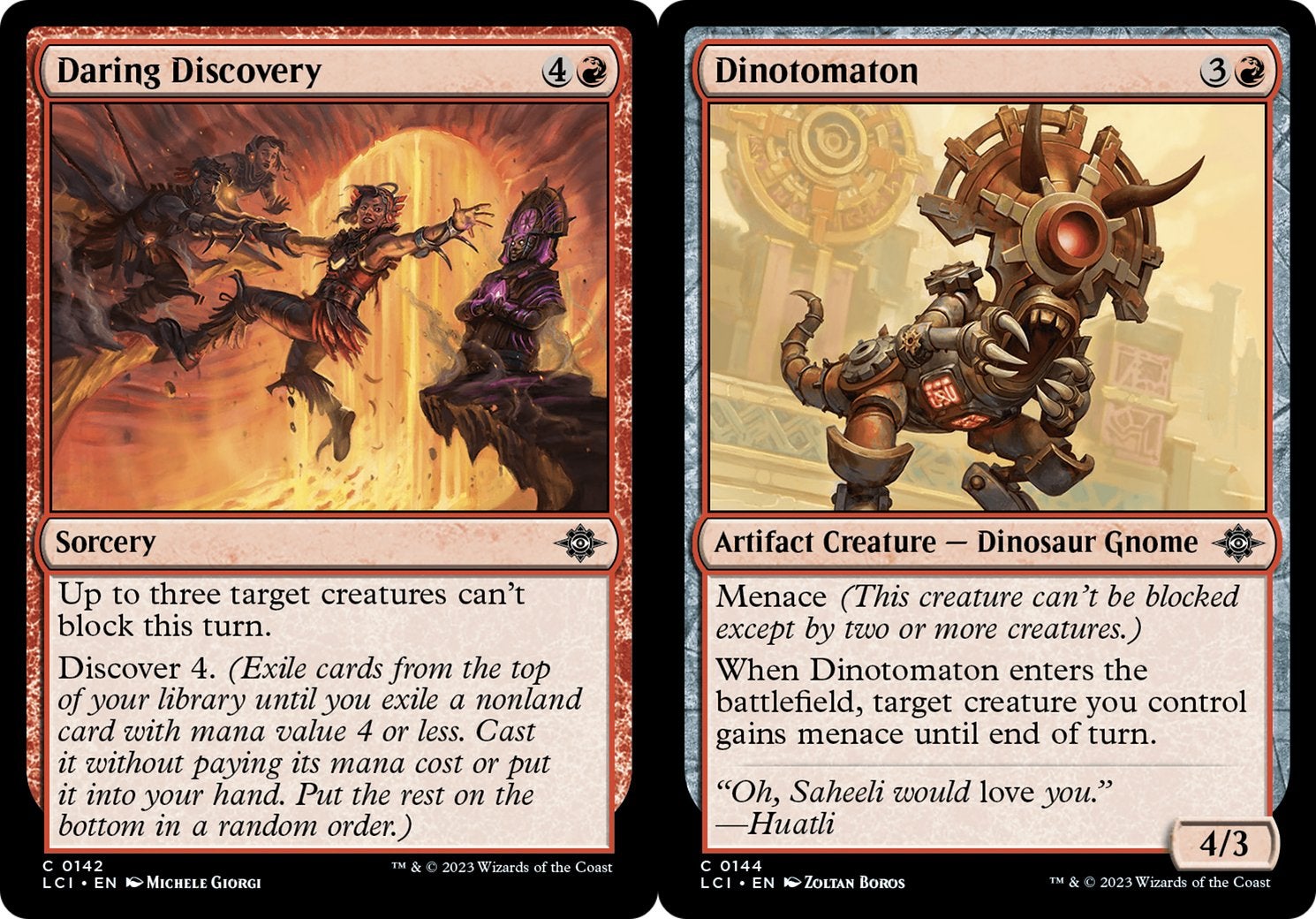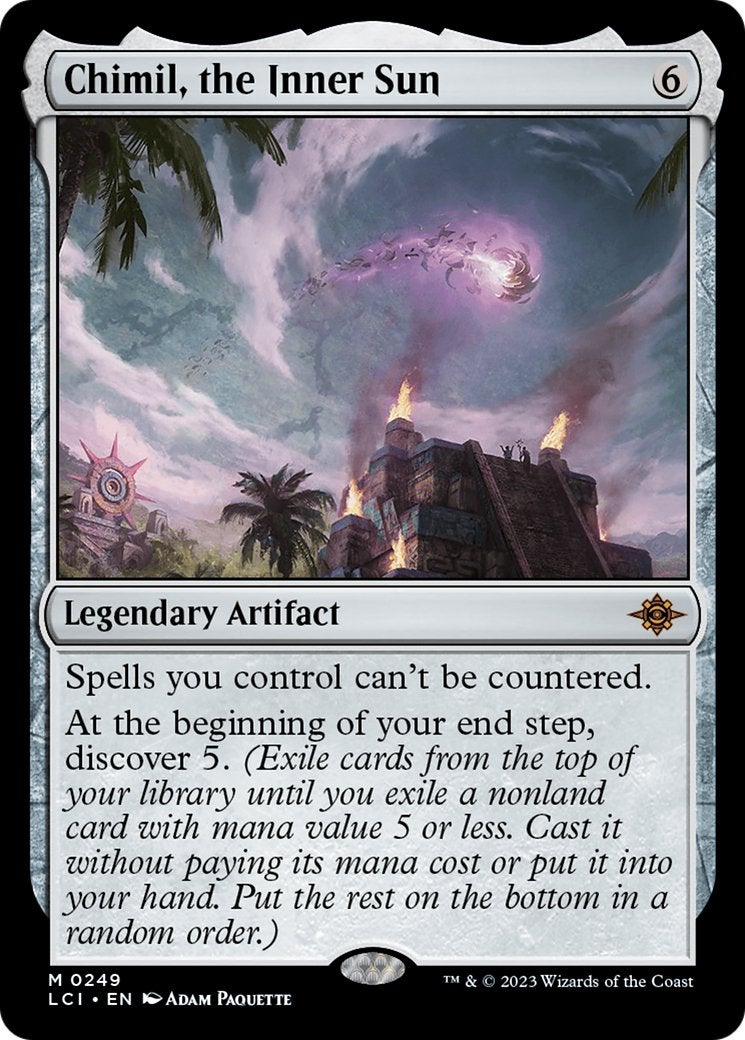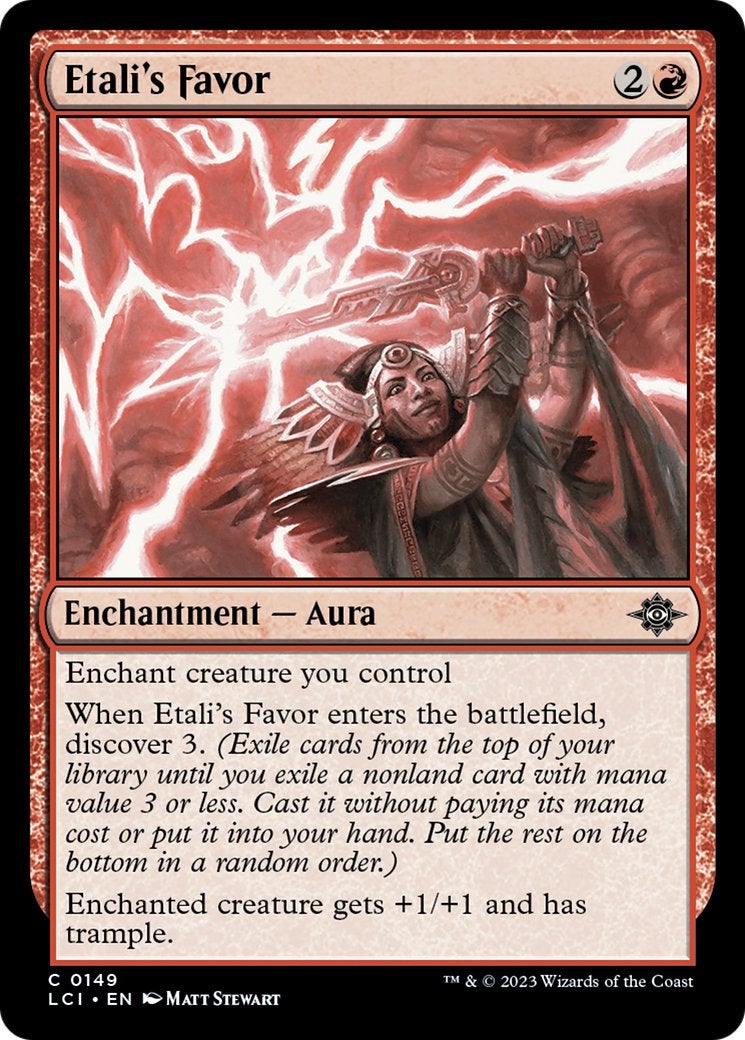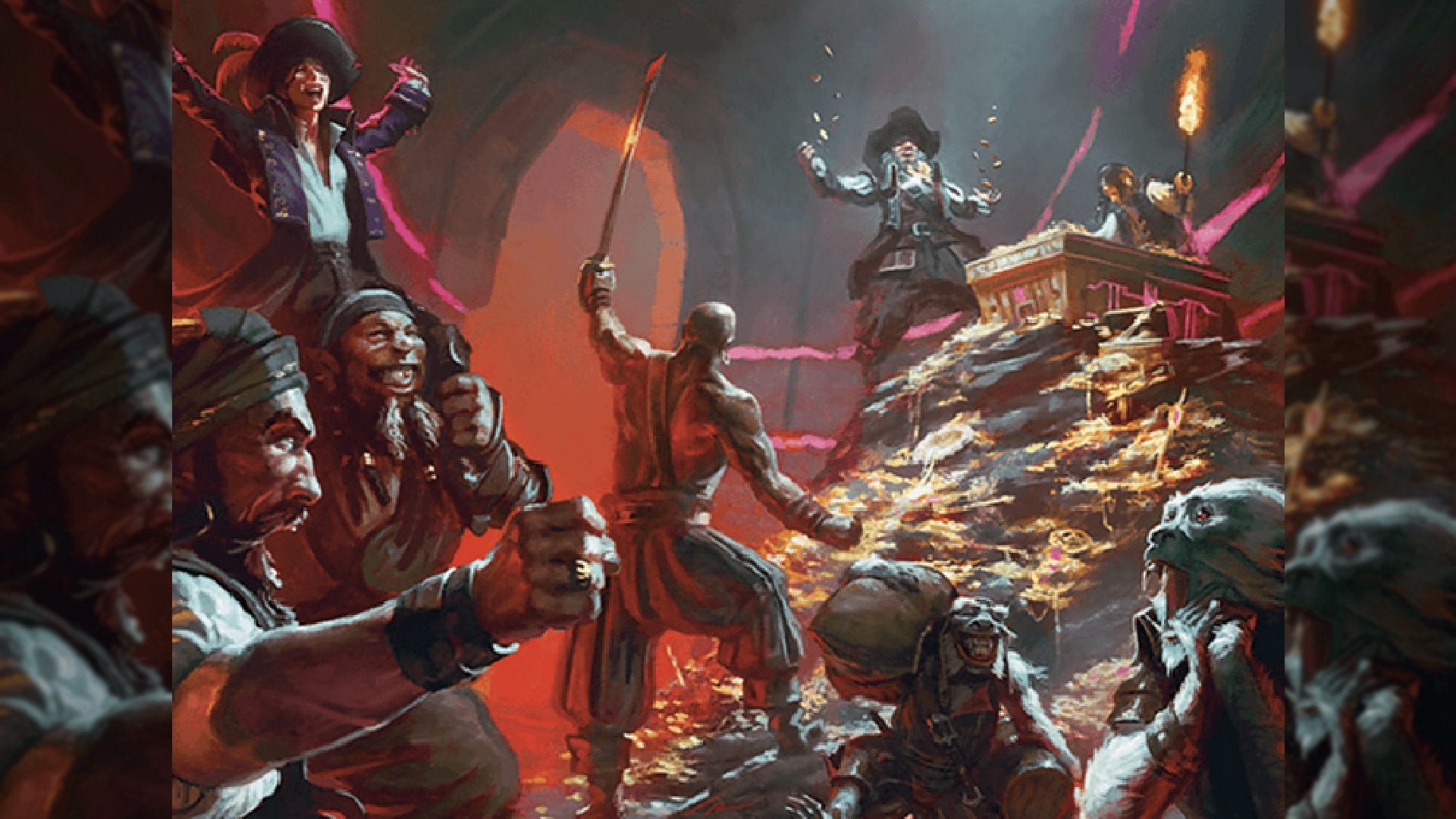![]() Key Takeaway
Key Takeaway
When you Discover [N], you exile cards from the top of your library. Keep exiling cards until you exile a nonland one whose mana value is equal to (or lower) than the number [N] next to “Discover.” Afterward, you can cast that card whose mana value is the same as (or lower than) [N] without paying its mana cost—or put it in your hand.
Need to dig into your library? Well, now there’s a new way to do so in Magic: The Gathering! By making use of Discover in MTG, you can get your hands on—and cast—a card near the top of your deck easier than ever.
Table Of Contents
What Is Discover in MTG?
In MTG, Discover is a keyword action introduced in The Lost Caverns of Ixalan expansion from 2023. It triggers upon the card it’s printed on being cast. You’ll always see Discover with a number next to it (or an ‘X’), which denotes the intensity of its effect.
When you Discover [N], you exile cards from the top of your library. Keep exiling cards until you exile a nonland one whose mana value is equal to (or lower) than the number [N] next to “Discover.” Afterward, you can cast that card whose mana value is the same as (or lower than) [N] without paying its mana cost—or put it in your hand.
The rest of the cards you exiled in the process get put at the bottom of your library in random order. You don’t shuffle your deck when you Discover. Instead, shuffle your exiled cards and then place them at the bottom of your library without looking at them.
An Example of How Discover Works
Let’s use the Daring Discovery sorcery and the Dinotomaton creature in our explanation. You’ve got Daring Discovery in your hand and enough mana to cast it—so you do! In addition to disabling blocking on three target creatures this turn, you Discover 4 here.
As you begin exiling cards from the top of your library, we’ll pretend that you pulled Dinotomaton as your first exiled card. Since Dinotomaton’s mana value is 4 (1 red and 3 of any color), you can cast it without paying its mana cost. You can choose to cast it or place it in your hand.

Since Dinotomaton was the first card exiled, you don’t need to worry about exiling any other cards. Alternatively, if you exiled a few cards that have over a mana value of 4 before pulling Dinotomaton, you need to put those cards at the bottom of your library in a random order.
In a slightly different example, if you immediately exiled a card with less than a mana value of 4, you must choose to cast it or put it in your hand. It’s the first card with a mana value equal to or less than 4 that matters; you can’t exile more cards after that, you must pick the first one applicable.
Within this specific scenario, Dinotomaton would be a great spell to cast via Discover. It has an effect that gives another creature you control Menace until the end of the turn. This would be a great way to deal some easy combat damage to your opponent. With the way Menace works in MTG, you can get a nice advantage from this combo.
How to Use Discover in MTG
The best way to make use of Discover in MTG is to cast spells for free as often as possible. Spells with Discover let you save a lot of mana by casting cards straight from your library while implementing other effects. There are tons of ways to use this tactic in organic and fun manners.
Using Discover to Cast Spells for Free
We’ll look at two of our favorite cards with Discover to give you an idea of what we mean. First up: Chimil, the Inner Sun. This legendary artifact prevents your opponent(s) from countering spells you control—which is always nice. On top of that, at the beginning of every one of your end steps, you Discover 5.

As a result, you can potentially cast spells with a mana value of 5 or less from your deck for free once per turn (during your end step). A convenient bonus is that they can’t be countered thanks to Chimil’s other effect.
Since your deck likely has mostly cards with a mana value of 5 or less, this can be very helpful in setting up your board. On top of that, Chimil is colorless, so it’ll be at home in almost any deck.
Multi-Purposing Discover Effects
Next, let’s examine Etali’s Favor. Immediately, we love that this card references the deadly Etali, Primal Conqueror. In terms of main effects, Etali’s Favor is an enchantment—aura spell that gives a creature +1/+1 and Trample. What’s more, is that it also lets you Discover 3.

If you’re running strategies that involve lots of creature attacks, this is a decent spell to have in your deck. This is particularly true if your deck is a red and green one, as Trample tactics in MTG work great with these colors. By using your core plans while having Discover as a bonus side effect, you can do more every turn.
In the case of Etali’s Favor, you’ll buff a creature and potentially cast another for free. This strengthens your side of the battlefield in two ways at once!
How to Counter Discover in MTG
Besides straight-up using a counterspell variant on a card with the Discover effect, there’s not much you can do to stop the mechanic itself. With that said, when your opponent attempts to cast a spell through Discover’s effects, you can counter the casting of the discovered card.
You can also use your opponent’s Discover tactics to your advantage. When cards are exiled via Discover, they are always face-up. Use this opportunity to check out what cards your foe has in their library and hand. Cards exiled through Discover go back into your adversary’s library. So you’ll have some insight into the workings of their deck. Prepare for the threats you glean!
Even though the exiled cards go to the bottom of your opponent’s library, you can think ahead. In most formats, players have multiple copies of their best cards. As such, if you see a card in a foe’s library or hand, you can safely assume there are more of them lying in wait.
Trivia About Discover
Discover is very similar to the Cascade triggered ability introduced in the Alara Reborn expansion from 2009. Discover works exactly like Cascade with the following exceptions:
- The mana value of the spell with Cascade is what determines the mana value of the spell you can cast with this ability
- For instance, Cascade on a creature spell with a mana value of 6 total lets you Cascade-cast an exiled card with a mana cost of 6 or less
- If you choose not to cast an applicable spell through Cascade’s effects, you must put it at the bottom of your library with the other cards exiled through this effect—you cannot put it into your hand like with Discover
- However, like with Discover, choosing to cast a spell through Cascade’s effect is optional
Interestingly, Wizards of the Coast decided to revive Cascade through the creation of Discover. On the Storm Scale (a metric for determining which mechanics are most likely to return in future sets and expansions), Cascade scored a 7. In terms of the Storm Scale’s ratings, this means Cascade is not likely to return (1 is the highest, and 10 is the lowest in regards to return likelihood).
We hope you discovered some fun new facts in this article! Sorry for the pun. But we’re not sorry for filling you in on some important mechanic information! If you want to delve into more complex MTG concepts, check out our article on what “The Ring Tempts You” effect actually does.


